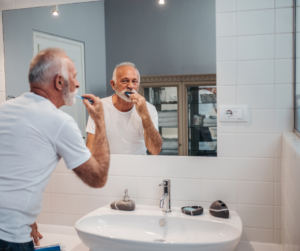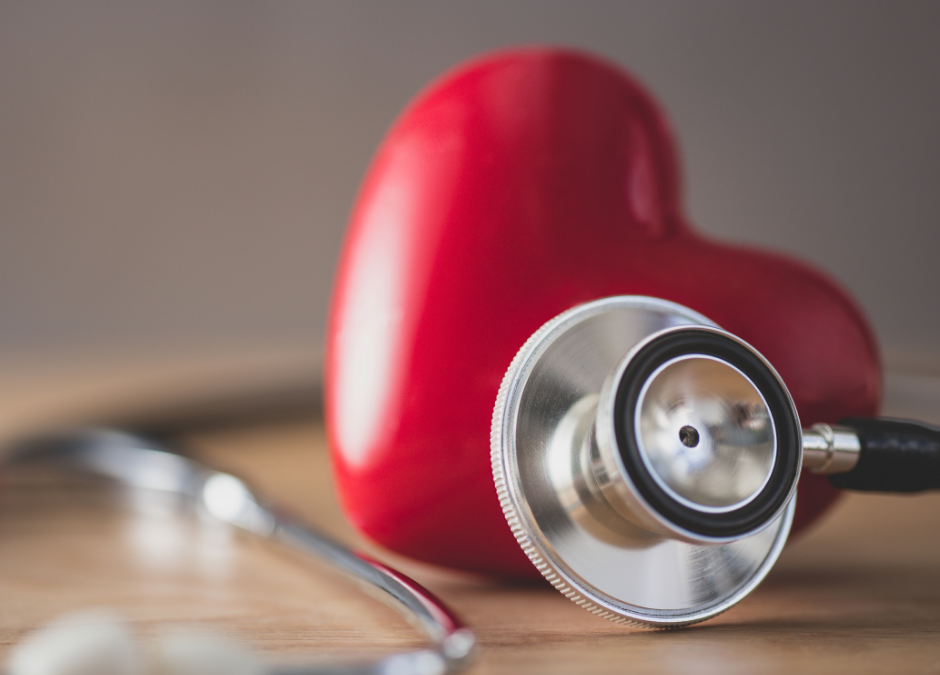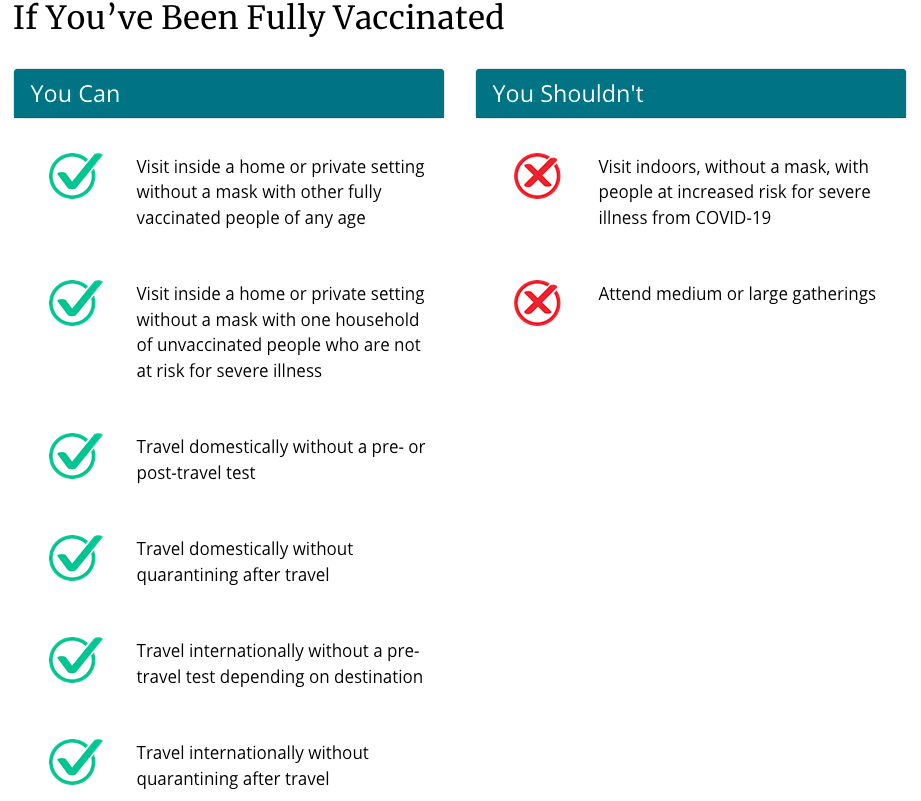
by admin | Jan 7, 2022 | Health & Wellness
 Did you know that problems in your mouth can affect the rest of your body? Or that your dental health offers clues about your overall health? Poor dental health contributes to major systemic health problems. Conversely, good dental hygiene can help improve your overall health. As a bonus, maintaining good oral health can even REDUCE your healthcare costs!
Did you know that problems in your mouth can affect the rest of your body? Or that your dental health offers clues about your overall health? Poor dental health contributes to major systemic health problems. Conversely, good dental hygiene can help improve your overall health. As a bonus, maintaining good oral health can even REDUCE your healthcare costs!
Researchers have shown us that there is a close-knit relationship between oral health and overall wellness. With over 700 types of bacteria in your mouth, it’s no surprise that when even one of those types of bacteria enter your bloodstream that a problem can arise in your body. Oral bacteria can contribute to:
- Endocarditis—The infection of the inner lining of the heart can be caused by bacteria that started in your mouth.
- Cardiovascular Disease—Heart disease, as well as clogged arteries and even stroke, can be traced back to oral bacteria.
- Low birth weight—Poor oral health has been linked to premature birth and low birth weight of newborns.
Over $45 billion is lost in productivity in the United States each year because of untreated oral health problems. These oral diseases can result in the need for costly emergency room visits, hospital stays, and medications, not to mention loss of work time. The pain and discomfort from infected teeth and gums can lead to poor productivity in the workplace, and even loss of income. Children with poor oral health are more prone to illness and may require a parent to stay home from work to care for them and take them to costly dental appointments. In fact, over 34 million school hours are lost each year because of emergency dental care.
So, how do you prevent this nightmare of pain, disease, and increased healthcare costs? It’s simple! By following through with your routine yearly dental check-ups and daily preventative care, you will give your body a big boost in its general health. Check out these tips for a healthy mouth:
- Maintain a regular brushing/flossing routine—Brush and floss teeth twice daily to remove food and plaque from your teeth, and in between your teeth where bacteria thrive.
- Use the right toothbrush—When your bristles are mashed and bent, you aren’t using the best instrument for cleaning your teeth. Make sure to buy a new toothbrush every three months. If you have braces, get a toothbrush that can easily clean around the brackets on your teeth.
- Visit your dentist—Visit your dentist for a check-up every 6 months. He/she will be able to look into that window to your body and keep your mouth clear of bacteria. Your dentist will also be able to alert you to problems they see as a possible warning sign to other health issues, like diabetes, that have a major impact on your overall health and healthcare costs.
- Eat a healthy diet—Staying away from sugary foods and drinks will prevent cavities and tooth decay from the acids produced when bacteria in your mouth comes in contact with sugar. Starches have a similar effect. Eating healthy will reduce your out of pocket costs of fillings, having decayed teeth pulled, and will keep you from the increased health costs of diabetes, obesity-related diseases, and other chronic conditions.
- Drink more water—Water is the best beverage for your overall health—including oral health. Drinking water after every meal can help wash out some of the negative effects of sticky and acidic foods and beverages in between brushes.
A healthy oral hygiene routine will do wonders for your teeth, mouth, and smile from a dental perspective. Oral health is also a key indicator of overall health and well-being. That should keep the rest of your body smiling as well!

by admin | Jul 27, 2021 | Health & Wellness, Hot Topics

Heartbreaks are painful, but did you know that heart disease is the leading cause of death in the United States, with more than 655,000 people dying from the condition each year. This equates to one in four deaths attributed to this awful disease. The most common form of heart disease is coronary artery disease (CAD), which is what can cause heart attacks.
CAD is caused when a substance called plaque builds up in a person’s arteries. As the buildup grows, the opening of the arteries gradually closes until blood flow is blocked and the patient experiences a heart attack. While these statistics are sobering, there are several ways we can prevent heart disease. Knowing the “why” about this disease can aid in prevention. First, let’s learn about the big three risk factors of heart disease:
High Blood Pressure
High blood pressure (HBP) is the force of blood pushing against blood vessel walls. This is what your nurse checks when she puts the blood pressure cuff on your arm and pumps air into it at your check-up. She is listening for the pressure when your heart beats and the pressure for when your heart is at rest between beats. High blood pressure usually has no signs or symptoms so it is very important to keep your annual physical appointments with your doctor and to follow her recommendations if she diagnoses you with HBP.
High Cholesterol
High cholesterol is when you develop fatty deposits in your blood vessels. These deposits can lead to narrow vessels and increase your chance of a heart attack. It is determined through blood tests. While high cholesterol can be inherited, it can also be prevented through medication, diet and exercise.
Smoking
Smokers are four times more likely to develop heart disease than non-smokers. The nicotine in smoke reduces your blood flow, raises your blood pressure, and speeds up your heart. Quitting smoking will not reverse the damage done to your heart, but it greatly reduces the damage going forward to your heart and arteries.
In addition to the three key risk factors, it’s important to explore what we can do to prevent it. Prevention behaviors can take you from the danger zone of heart disease and put you on the path to a healthy heart.
Healthy Diet
According to the Mayo Clinic, simple tips to prevent heart disease by diet include tips like these: controlling portion size, eating more vegetables and fruits, selecting whole grains, limiting unhealthy fats, choosing low-fat protein, reducing sodium intake, and limiting treats.
Healthy Weight
Being overweight increases your risk for heart disease. One measure used to determine if your weight is in a healthy range is body mass index (BMI). If you know your weight and height, you can calculate your BMI at CDC’s Assessing Your Weight website. When in doubt, consult a physician who can help in calculating whether your health is at risk due to weight.
Physical Activity
Among the many benefits to getting enough physical activity can, it can help you maintain a healthy weight and lower your blood pressure, cholesterol, and sugar levels. From walking, to swimming, to cycling, adding even moderate activity to your routine can have a great impact on your heart health. Just remember, it’s always a good idea to check with your doctor before starting any new exercise regimen.
Quit Smoking
Smoking cigarettes greatly increases your risk for heart disease. If you don’t smoke, don’t start. If you do smoke, quitting will lower your risk for heart disease. Your doctor can suggest ways to help you quit, and you can find many other helpful resources, including creating a tailored plan to help you quit at SmokeFree.gov.
Limit Alcohol
There’s a good reason your doctor asks about routine alcohol consumption at each check-up. Drinking too much alcohol can drastically raise blood pressure and binge drinking can increase heart rate. For heart health, the medical guidelines state that men should have no more than two drinks per day, and women only one. Talk to your doctor if you aren’t sure whether or not you should drink alcohol or how much you should drink for optimal heart health.
Check out these great resources to better educate yourself and others on heart health:
Understand Your Risks to Prevent a Heart Attack
Heart Health Information
Strategies to Prevent Heart Disease
Heart Health Tips

by admin | Jul 8, 2021 | Health & Wellness
 Summer is here and so many of us work hard to lose a few pounds before summer vacation but then get to our vacations and ‘’want to live it up!’’ The problem is that then we end up bloated and unhappy with those decisions. Vacation is supposed to be a time to relax and unwind and shouldn’t make you worrisome or apprehensive about your fitness goals. Here are a few tips to stay on track with your goals while still being able to enjoy yourself:
Summer is here and so many of us work hard to lose a few pounds before summer vacation but then get to our vacations and ‘’want to live it up!’’ The problem is that then we end up bloated and unhappy with those decisions. Vacation is supposed to be a time to relax and unwind and shouldn’t make you worrisome or apprehensive about your fitness goals. Here are a few tips to stay on track with your goals while still being able to enjoy yourself:
Make a Plan
What are you looking forward to the most? Eating at a certain restaurant? A certain food in general? Try to make good choices with your food and activity all day so that you won’t feel guilty if you indulge in eating your favorite burger. Allow yourself a splurge, enjoy it, but then move on and get back on track.
Drink Water
Drinking enough water may be the last thing you are thinking about on vacation but it is essential for your health and to help you stay on track. Drinking water not only helps your body function properly but also helps you feel full before and during meals so you eat less. Even the slightest bit of dehydration can cause you to believe you need food when, in reality, you just need some water.
In addition, water is a great choice to substitute for alcohol. Drinking water is also a good way to slow down the amount of alcohol you’re drinking and helps you to avoid hangovers or getting the ‘’munchies’’ later that night and the next day.
Schedule in Movement
Make a commitment to schedule in daily movement. The goal isn’t to make strength improvements or lose weight but rather to stay consistent to keep momentum. If you enjoy walking, jogging, or biking, it’s time to take go into the great outdoors to enjoy your new surroundings. You can also engage in new opportunities to move your body in ways that aren’t available to you at home, like: surfing, swimming, rock climbing and paddle boarding.
Don’t Skip Meals
Whether you’re rushing to tourist sites or heading to the beach for the day, it’s easy to lose track of time and skip a meal. But, skipping a meal can easily lead to overeating at your next meal. Keeping your hunger in check is key so pack a few nutritious, protein packed snacks whenever you head out.
Remember Your Goals
When you are struggling to turn down that second serving of dessert, remember why you wanted to get healthy in the first place. Is it to feel confident? Get your cholesterol numbers down? To be able to run and play with your kids? Find something that you find motivating and remind yourself several times a day.
Take a breath and enjoy life!
Go dancing, biking, swimming or go hiking! Vacation is the time to slow down and enjoy the little moments. This time away is important to your wellbeing and mental health.
Staying on track on vacation doesn’t have to mean perfection – it just means you have to strike a balance. It is possible to have a great time without sacrificing fun or sabotaging all that hard work you put in before your trip. Even with these tips, your diet progress may stall on vacation (and that’s ok!). As long as you’re not gaining weight, you’re still on track toward meeting your goals. Relax, enjoy yourself, and focus on making healthy choices when you can.

by admin | Jun 29, 2021 | Health & Wellness
 We have certainly been focused on improving our health this year. June is Men’s Health Month and provides a great opportunity to focus on some simple tips that men can follow to shore up their health. These five guidelines will not only assist with a man’s physical health, but also their mental health.
We have certainly been focused on improving our health this year. June is Men’s Health Month and provides a great opportunity to focus on some simple tips that men can follow to shore up their health. These five guidelines will not only assist with a man’s physical health, but also their mental health.
Make Annual Appointments
Men are notoriously the punchline for jokes about not going to the doctor until they are on their death bed. Let’s stop the joking! Annual check-ups ensure you and your doctor are both aware of your health issues. Annual exams and blood tests can look at blood pressure, warning signs of heart disease, obesity, and cholesterol. Staying on top of these health issues through regular doctor’s visits can extend your life and improve your overall health.
Eat a Healthy Diet
A healthy diet does not mean eating just salads. Look at MyPlate.gov to see what a healthy plate should look like for each meal. Cut down on sugar intake, make half your meal fruits and vegetables, and vary up your protein routine. Healthy food choices do more than assist with weight loss, they also decrease your risk for heart disease, diabetes, and stroke.
Know Your Family History
Does your family have a history of cancer? What about heart disease? Men who know their family’s medical history can share this information with their doctor so that they can be better informed about possible issues in the future. Knowing that your family has certain proclivities to disease, allows you to go on the offensive with your health. Write down your medical history and that of your parents and close relatives.
Get Your Sleep
Adults need 7-9 hours of sleep each night. According to the Sleep Foundation, “Sleep allows the brain and body to slow down and engage in processes of recovery, promoting better physical and mental performance the next day and over the long-term.” Men should make sure they get enough sleep each night because poor sleep is also closely related to increased chances of obesity, heart disease, diabetes, and depression. Sleep is an essential part of a healthy lifestyle.
Strengthen Your Relationship Bonds
Connecting with others has been proven to improve your overall health and even extend your life. As we grow older, relationships are harder to build as families are built, jobs change, and interests evolve. We’ve all seen how isolation and social distancing negatively affect our mental health this year. Solid relationships allow you to have accountability with others about struggles you may have, give you a network of support in a health crisis, and even improve your self-esteem. When you have good mental health, your physical health will also be affected. Men must work to create and maintain relationship bonds for the sake of their mental and physical well-being.
The mental and physical health of the men in our lives can easily be improved by following these simple tips. From getting enough sleep to eating a healthy diet, these guidelines are certainly a great way to kick-off a healthy routine in your life.

by admin | Apr 21, 2021 | COVID-19, Health & Wellness
COVID-19 vaccines are effective at protecting you from getting sick. Based on what we know about COVID-19 vaccines, people who have been fully vaccinated can start to do some things that they had stopped doing because of the pandemic.
We’re still learning how vaccines will affect the spread of COVID-19. After you’ve been fully vaccinated against COVID-19, you should keep taking precautions—like wearing a mask, staying 6 feet apart from others, and avoiding crowds and poorly ventilated spaces—in public places until we know more.
These recommendations can help you make decisions about daily activities after you are fully vaccinated. They are not intended for healthcare settings.


What You Can Start to Do
If you’ve been fully vaccinated:
- You can gather indoors with fully vaccinated people without wearing a mask or staying 6 feet apart.
- You can gather indoors with unvaccinated people of any age from one other household (for example, visiting with relatives who all live together) without masks or staying 6 feet apart, unless any of those people or anyone they live with has an increased risk for severe illness from COVID-19.
- If you travel in the United States, you do not need to get tested before or after travel or self-quarantine after travel.
- You need to pay close attention to the situation at your international destination before traveling outside the United States.
- You do NOT need to get tested before leaving the United States unless your destination requires it.
- You still need to show a negative test result or documentation of recovery from COVID-19 before boarding a flight to the United States.
- You should still get tested 3-5 days after international travel.
- You do NOT need to self-quarantine after arriving in the United States.
- If you’ve been around someone who has COVID-19, you do not need to stay away from others or get tested unless you have symptoms.
- However, if you live in a group setting (like a correctional or detention facility or group home) and are around someone who has COVID-19, you should still stay away from others for 14 days and get tested, even if you don’t have symptoms.
What You Should Keep Doing
For now, if you’ve been fully vaccinated:
- You should still take steps to protect yourself and others in many situations, like wearing a mask, staying at least 6 feet apart from others, and avoiding crowds and poorly ventilated spaces. Take these precautions whenever you are:
- You should still avoid medium or large-sized gatherings.
- If you travel, you should still take steps to protect yourself and others. You will still be required to wear a mask on planes, buses, trains, and other forms of public transportation traveling into, within, or out of the United States, and in U.S. transportation hubs such as airports and stations. Fully vaccinated international travelers arriving in the United States are still required to get tested within 3 days of their flight (or show documentation of recovery from COVID-19 in the past 3 months) and should still get tested 3-5 days after their trip.
- You should still watch out for symptoms of COVID-19, especially if you’ve been around someone who is sick. If you have symptoms of COVID-19, you should get tested and stay home and away from others.
- You will still need to follow guidance at your workplace.

What We Know and What We’re Still Learning
- We know that COVID-19 vaccines are effective at preventing COVID-19 disease, especially severe illness and death.
- We’re still learning how effective the vaccines are against variants of the virus that causes COVID-19. Early data show the vaccines may work against some variants but could be less effective against others.
- We know that other prevention steps help stop the spread of COVID-19, and that these steps are still important, even as vaccines are being distributed.
- We’re still learning how well COVID-19 vaccines keep people from spreading the disease.
- Early data show that the vaccines may help keep people from spreading COVID-19, but we are learning more as more people get vaccinated.
- We’re still learning how long COVID-19 vaccines can protect people.
- As we know more, CDC will continue to update our recommendations for both vaccinated and unvaccinated people.

by ckistler | Mar 4, 2021 | Health & Wellness

Do these promises sound familiar?
“When I have kids, I’ll never let them eat XYZ.”
“My kids will always eat whatever I put in front of them.”
“Our family will never eat out all the time.”
We’ve all said them at some point in our lives and, whether we’ve started a family or are still in the process of building one, we’ve probably all broken those same promises! We read the books. We talk to other parents. We watch all the educational programs. And, the truth we universally learn is that raising healthy kids is hard work! Between getting them to eat healthy foods and encouraging them to get enough exercise, it’s a full-time job. So, what can we do to make it simpler? Let’s get back to basics and look at 3 tips that can get our kids on track to healthy living.
- FOOD CHOICES—DON’T FEED THE ADDICTION
Perhaps the easiest way to help kids make better food choices is to control what food is stocked in your home. If your pantry is full of sugary (albeit delicious) foods, then guess what the little humans in your home are going to eat when they are hungry (or bored)? Sugar is addictive and so the habit of reaching for food filled with this ingredient a by-product of this addiction. Remove the sugar-filled food and like Ole Mother Hubbard, when they go to fetch a sugar snack, they’ll find the cupboard is bare. Replace the sugar-filled food with granola bars, low-fat chips, easily-accessible cut-up fruits and veggies, yogurt, etc. and they’ll learn to grab these healthier options when they are hungry!
- BE A ROLE MODEL—SHOW UP AND SHOW OUT
The folks under your roof tend to watch what you do. They watch what you eat and why you eat it. Be a role model for your people and make smart food choices regarding the type of food you put on your plate and how much of it you consume. If you are always eating high-fat, high-calorie, fast food then guess what they assume is the right things to eat? Did you know those eyes are also watching WHY you eat? If you use food to help you de-stress or when you are sad, they will follow your example. Do you assign your feelings of happiness to food? You will have kids who will think food makes them happy. Make sure that how you behave around food points those who are closely watching you towards healthy actions.
- INVOLVE THEM—PLAN, MAKE, MOVE
Make kids a part of the decision-making process for meals during the week. Children will be more likely to eat the food you place in front of them if they get to help plan out some of the meals. Make a “Family Favorites” list that everyone gets to contribute a couple ideas towards whether it’s favorite breakfasts, dinners, or even snacks. Next, ask the idea-generator to assist in making that food choice for the family. Having a hand in creating the meal gets you buy-in from your assistant. Finally, get everyone up and moving whether it’s to visit a new park after school, take an after-dinner walk, or go exploring on some local trails over the weekend. Move together and you’ll make memories as you do it!
You can start building healthy kids by following these 3 simple tips. By stocking your home with healthy food choices, being a food-behavior model, and involving your family in planning, making, and moving, you will find yourself on the path to success!
BONUS CONTENT:
Here are some useful links to help you take the first steps towards raising healthy kids.
Healthy Breakfasts
Healthy Lunches
MyPlate Kids

 Did you know that problems in your mouth can affect the rest of your body? Or that your dental health offers clues about your overall health? Poor dental health contributes to major systemic health problems. Conversely, good dental hygiene can help improve your overall health. As a bonus, maintaining good oral health can even REDUCE your healthcare costs!
Did you know that problems in your mouth can affect the rest of your body? Or that your dental health offers clues about your overall health? Poor dental health contributes to major systemic health problems. Conversely, good dental hygiene can help improve your overall health. As a bonus, maintaining good oral health can even REDUCE your healthcare costs!







